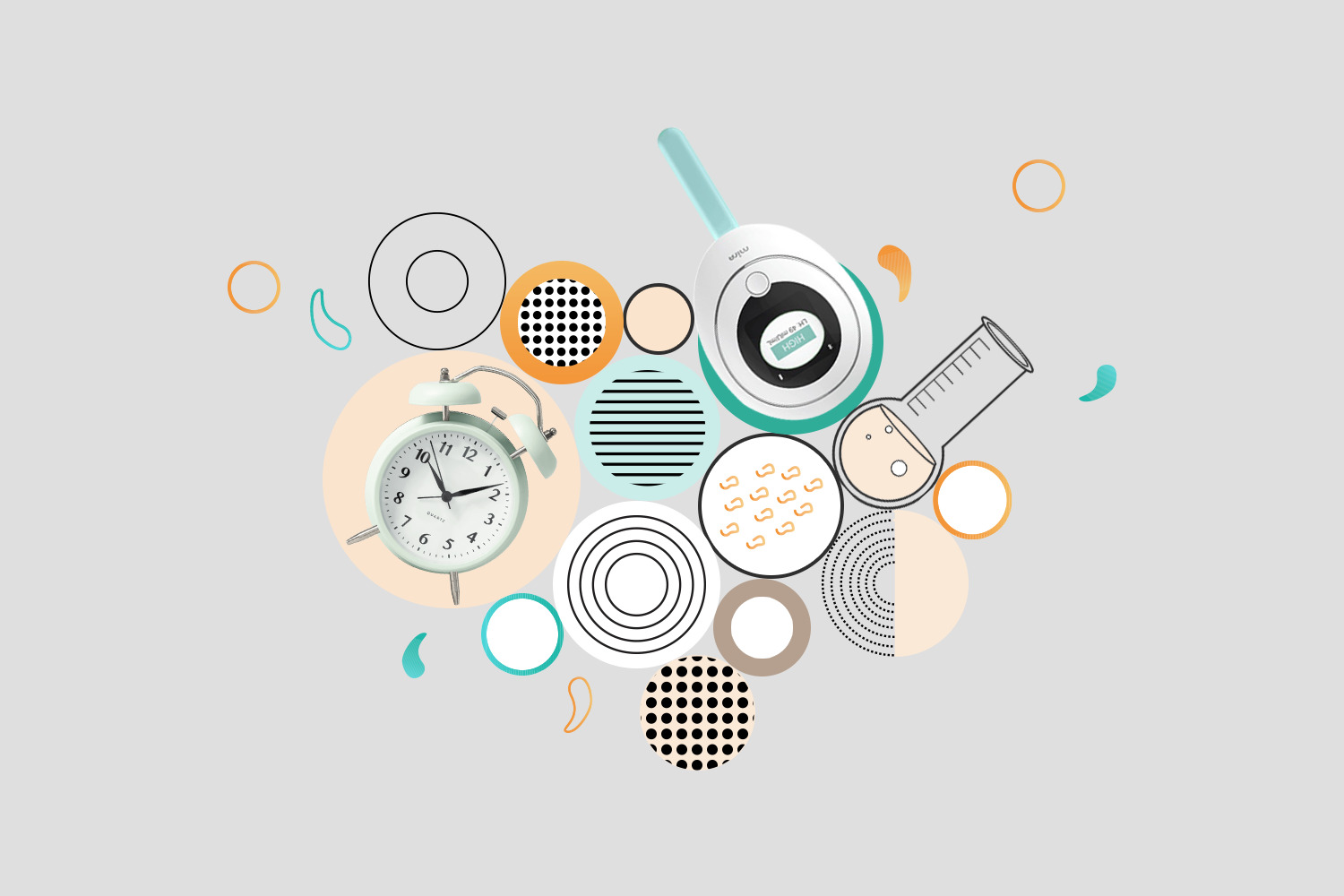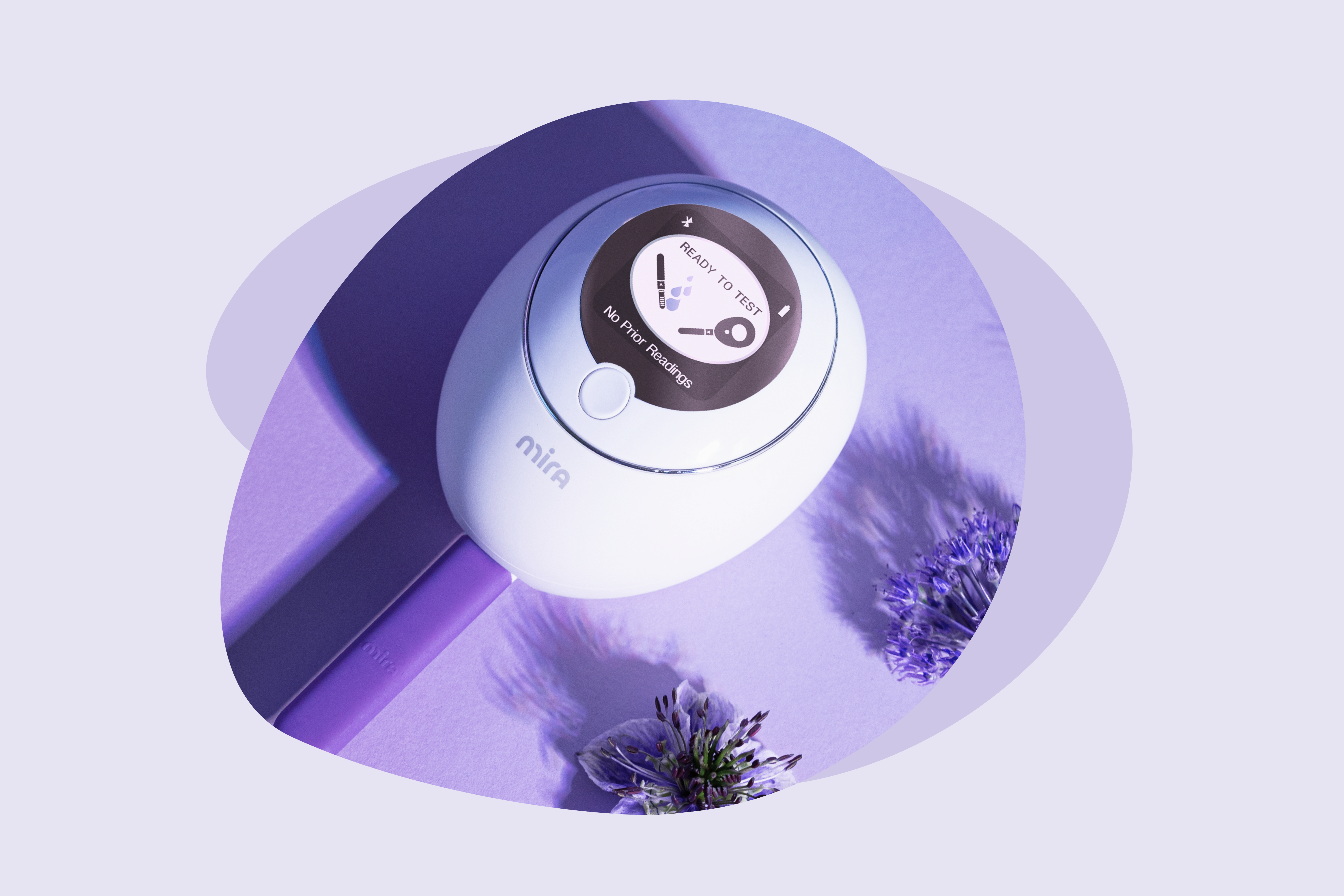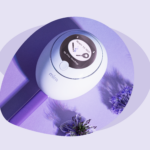How To Test With Mira Fertility

If you are thinking about tracking your fertility and considering using Mira, it is normal to have some questions about ovulation and the Mira Fertility Tracker. When do you ovulate? How do trackers work? Why do you need an app? It is important that you have a good understanding of how the Mira Fertility Tracker works, and in this article we will be going over the most common questions about the Mira Fertility Tracker, so you can start tracking with confidence.
What is the Mira Fertility Tracker?
The Mira Fertility Tracker is a comprehensive device that can predict your ovulation cycle and determine each person’s individual fertile window with up to 99% accuracy, through the power of testing and tracking telltale fertility hormones that can be found in urine. Mira then uses the combination of the results from this urine test to collect the most accurate reading and provide you with a clear understanding of your cycle.
Mira monitors 4 principle fertility hormones: LH, E3G, PdG, and FSH. This provides Mira with the most well-rounded picture and helps you best understand your fertility, which then can help you to know when to time unprotected sex with your partner (when applicable), or time fertility treatment, and give you the best chance of conceiving.
*Ovulation meaning: Ovulation is the release of an egg from an ovary ready for fertilization, and is a stage in a woman’s cycle where she is at her most fertile.
How Does the Mira Fertility Tracker Work?
The Mira Fertility Tracker works with the powerful combination of science and technology, thanks to our Hormone Monitor and AI-assisted app, which has, at the time of writing, predicted 1.2 million ovulations. Using the Mira test wands, Mira looks out for the 4 key fertility hormones in your urine to calculate and predict when you are at your most fertile.
Once you have been tracking with Mira for a full cycle, the app will be able to use your recorded data to estimate your Fertility Score, which will then adjust on the basis of future hormone tests. Our AI is trained on 15 million hormone data points.
The more you test and record your results, the more accurately the Mira App will be able to predict your fertile window, which it will indicate with a green dot on the in-app ovulation calendar. It is key to test on these days, as this will also be when you ovulate and therefore most likely to get pregnant.
Mira will also provide you with a Fertility Score from 0-10 (0 for low fertility, up to 10 on your ovulation day), which will help you clearly understand how fertile you are throughout your cycle. When you are about to ovulate, a key thing that you can look out for in your readings is a sudden and distinct rise in E3G and LH levels, although this rise may vary depending on your personal menstrual cycle.
Why Choose the Mira Fertility Tracker?
There are many OPKs and other ovulation calculators available on the market, but we’d like to explain to you what makes Mira different. OPKs and other trackers on the market lack the numerical, real-time data Mira offers—causing missed peaks and false positives. Mira’s extreme sensitivity can catch every tiny fluctuation of your hormones and offer you the most accurate readings for your fertility, all with the help of science-backed technology.
The key thing that sets Mira apart, is that the Mira Hormone Monitor is the only at-home monitor that uses quantitative technology to monitor your fertility, all in a device that is convenient enough to fit in your pocket.
Mira Fertility Tracker for Women with PCOS
PCOS affects 1 in 10 women and causes many women to experience multiple or inconsistent spikes in their LH hormone levels that may last a couple of days, which doesn’t lead to ovulation and makes conception impossible.
This means that if you have PCOS, your hormone curves may look unique. However, with the help of Mira, you will still be able to track your cycle’s patterns, identify your ovulation window with precision, and help you on your path to pregnancy. We are proud to say that 56% of users with PCOS got pregnant within the first year of using Mira.
Mira also offers our very own PCOS Supplements, which can further help you if you are trying to get pregnant, which are available to purchase on our website.
*Mira is not designed to monitor, diagnose, or track PCOS.
How to Use the Mira Fertility Tracker: A Step-by-Step Guide
Mira works through the daily testing of your urine for changes in hormone levels. Although you can do your test at any time of day, it is recommended to choose and stick to the same time every day for consistency.
Here is how to perform a Mira test in four easy steps:
1. Limit your fluid intake 2 hours before testing
2. Dip the test wand into urine for 20 seconds
3. Insert the test wand immediately into the Mira Hormone Monitor
4. Wait for your hormone results to sync automatically with the Mira App in 21 minutes
It’s as simple as that. The Mira App will use this data to determine when you need to test, and will remind you with notifications on your smartphone when it is time to do so. You will use around 10-15 wands each cycle, depending on your cycle length, as you will test approximately once a day around and during your fertile window, and twice a day on ovulation day.
Other useful tips when testing with Mira:
- Leave your test wand in the urine sample for no longer than 20 seconds.
- Do not shake the test wand after sampling.
- Insert the wand into the Hormone Monitor horizontally, and let the Monitor sit on a horizontal surface.
You can also visit this link for video instruction, which will provide you with further directions.
You will test twice on your ovulation day, as hormone peaks can occur throughout the day, so it is important to do the second test as confirmation that ovulation may occur soon, after the LH peak (usually within 12 hours). If you receive a surging LH level positive ovulation reading in the morning, test again within the next six hours for confirmation.
Understanding the Mira App: Features and Benefits
With the Mira App downloaded to your smartphone, you will receive notifications to remind you when to test. It can be helpful to take some time to familiarize yourself with the App and the in-app calendar, so you can better understand how to navigate the app and read the collected data accurately and with ease.
The Mira App has more than 180,000 users across the world, and offers many features and benefits that can help you make confident decisions around your fertility. Here are just some examples:
Hormone Tracking:
Receive unique insights on your fertility based on your personal hormone data.
View the Hormone Curve:
The Mira App uses AI algorithms to understand your fluctuating hormone trends for precise and personalized ovulation predictions.
Advanced Calendar:
Record specific cycle details with the Mira calendar to predict and view your fertile window with ease and convenience.
Cycle Insights:
The Mira App provides you with helpful details about the different phases of your personal cycle.
Conclusion
Mira has helped more than 120,000 people on their fertility journey, and it can help you too. With the power of science, AI technology and automatic app synchronization, it’s never been easier to track and understand your cycle. We hope this article has been helpful.
If you would like more information or further insights on your data results and hormone levels, you can email support@miracare.com or check our FAQ section below. We are always happy to help.

Frequently Asked Questions
How many days after your period can you get pregnant?
If we take an average 28-day cycle as an example, a woman will be most likely to get pregnant at around day 14 of her cycle, during ovulation. However, this time frame can vary greatly, as many women will experience shorter or longer menstrual cycles.
How accurate are fertility apps?
Fertility apps work by analyzing data that you input daily to track and predict your cycle, and can be a useful way to understand the patterns of your cycle. However for many apps, it can take a couple of cycles for these apps to present accurate predictions on your cycle, which is important to consider.
Is it helpful to use fertility trackers when trying to conceive, or does this just lead to unnecessary stress and complicate the process?
Using fertility trackers can definitely help you understand your cycle and predict your fertile window. However if this is making the process feel complicated and stressful, there are other options for you, such as looking out for telltale ovulation symptoms (e.g cervical mucus).
Can tracking ovulation help our chances of getting pregnant?
If you are trying to get pregnant, it can be helpful to understand your ovulation as it plays a big part in your fertility. Being able to predict when you are at your most fertile can help you time unprotected sex and give yourselves the best chance of conceiving.
What is the best method to check ovulation?
As Mira’s Fertility Tracker tracks the levels of multiple fertility hormones, it can provide you with clear and accurate predictions on when you will ovulate. The key thing to remember is combining multiple methods to get the clearest picture, similar to how Mira works. These can include tracking your basal body temperature, cervical mucus, and other ovulation symptoms.
Mira’s Editorial Process
All content produced by Mira meets stringent editorial standards, ensuring excellence and accuracy in language and medical precision. Every piece undergoes thorough fact-checking and review by qualified professionals. Check out our full editorial process to learn more.










